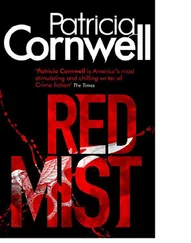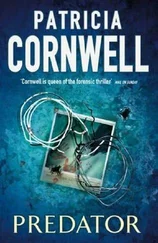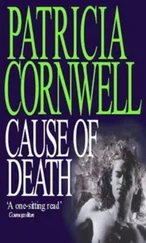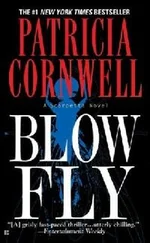“It’s an acronym,” Lucy said.
On the screen:
THANK YOU FOR PARTICIPATING IN THE CALCULATED INTEGRATION OF GPS UPLOADED LIGHT AND ACTIVITY STUDY.
“CALIGULA,” Scarpetta said. “I still don’t see why anyone would choose an acronym like that.”
“Suffered chronically from nightmares and insomnia.” Lucy was skimming through files on her other MacBook, Googles about Caligula. “Used to wander the palace all night long waiting for the sun to come up. The name might have to do with that. If, for example, the study’s related to sleep disorders and the effects of light and darkness on moods. His name was derived from the Latin word caliga, which means ‘little boot.’ ”
Marino said to Scarpetta, “Your name means ‘little shoe.’”
“Come on, guys,” Lucy said under her breath, talking to her neural networking programs and search engines. “Sure as hell would be easier if I could take this to my office.” She meant the BioGraph device.
“It’s all over the Internet about Scarpetta meaning ‘little shoe’ in Italian,” Marino went on, his eyes uneasy behind thick plastic. “The little shoe, the little gumshoe, the little lady with the big kick.”
“Now we’re cooking,” Lucy said.
Data were rolling down her screen, a stew of letters, symbols, numbers.
“I wonder if Toni knew exactly what was being collected by the thing she was wearing on her wrist morning, noon, and night,” Lucy said. “Or if whoever killed her did.”
“Unlikely she did,” Scarpetta said. “The details of whatever theory researchers hope to prove aren’t advertised or disseminated publicly. The subjects themselves don’t know the details, only generalities. Otherwise, they can skew the results.”
“Must have been something in it for her,” Marino said. “Wearing that watch all the time. Answering questions every day.”
“She may have had a personal interest in sleep disorders, seasonal affective disorder, who knows what, and saw an ad for a study or someone gave her information. Her mother said she was moody and affected by gloomy weather,” Scarpetta said. “Usually people involved in research studies get paid.”
She thought about the father, Lawrence Darien, and his aggressive attempts at claiming Toni’s personal effects and her dead body. A bioelectrical engineer from MIT. A gambler and a drunk with ties to organized crime. When he’d made a scene at the morgue, maybe what he’d really been after was the BioGraph watch.
“Unbelievable what’s stored inside this thing.” Lucy pulled a stool in front of her MacBooks and sat, looking at raw data that had been stored inside Toni’s BioGraph device. “Obviously a combination actigraphy data logger with a highly sensitive accelerometer or bimorph element in a two-layer piezoelectric sensor that basically measures gross motor activity. I’m not seeing anything that strikes me as military or government.”
“What would you expect?” Marino asked. “If this was CIA or something.”
“Not this. Nothing’s encrypted the way I’m used to seeing when it’s classified by the government as top secret. Not the usual standard three-block ciphers with the bits and block sizes I associate with algorithms used in symmetric key cryptography. You know, these really long keys, longer than forty bits, that are supposed to be exportable but make it really hard for hackers to break the code. That’s not what we’ve got here. This isn’t military or any intelligence-gathering agency. It’s private-sector.”
“I guess we shouldn’t ask why you’d know how the government encrypts its top secret information,” Marino commented.
“The purpose of this thing is to gather data for some type of research, not spying, not war, not even terrorists for once,” Lucy said as data rolled by. “Not intended for the end user but for researchers. Geeks out there crunching data, but for whom? Sleep schedule variability, sleep quantity, daytime activity patterns, correlated to light exposure. Come on, start aggregating it into some sort of order that’s easy to look at.” Talking to her programs again. “Give me charts. Give me maps. It’s sorting by types of data. A lot of data. A ton of it. Recording data every fifteen seconds. Five thousand seven hundred and sixty times a day this thing was capturing God knows how many different types of data. GPS and pedometer readings. Location data, speed, distance, altitude, and the user’s vital signs. Heart rate and SPO-two.”
“SPO-two? You must be mistaken,” Scarpetta said.
“I’m looking at SPO-two,” Lucy said. “Hundreds of thousands of them. SPO-two captured every fifteen seconds.”
“I don’t see how that’s possible,” Scarpetta said. “Where’s the sensor? You can’t measure pulse oximetry, the oxygen saturation of blood, without a sensor of some type. Usually on a fingertip, sometimes a toe, sometimes an earlobe. Has to be a thin part of the person’s anatomy so a light can pass through the tissue. A light comprised of both red and infrared wavelengths that determines the oxygenation, the percentage of oxygen saturation, in your blood.”
“The BioGraph is Bluetooth-enabled,” Lucy said. “So maybe the pulse-oximetry device is Bluetooth-enabled.”
“Wireless or otherwise, there had to be one to take these measurements we’re seeing,” Scarpetta replied. “A sensor she wore virtually all of the time.”
A red laser dot moved over names and locations and the branches that connected them on the treelike graph filling the flat screen.
“Imagine Monsieur Chandonne, the father, no longer in power.” Benton held a laser pointer, illustrating what he meant as he talked. “And what family associations he has left are scattered. He and a number of his captains are in prison. The Chandonne heir apparent, the brother of Jean-Baptiste, is dead. And law enforcement for the most part has turned its attention to other international troubles. Al Qaida, Iran, North Korea, the global economic disaster. Jean-Baptiste, the surviving child, seizes the opportunity to take over, to start his life again and do it better this time.”
“I don’t see how,” O’Dell said. “He’s a lunatic.”
“He’s not a lunatic,” Benton said. “He is extremely intelligent, extremely intuitive, and for a while his intellect can overwhelm his compulsions, his obsessions. The question is how long can that last.”
“I totally disagree,” O’Dell said to Benton. “This guy a Mob boss? It’s not like he can wander around in public without putting a bag over his head. He’s an international fugitive, an Interpol Red Notice, and he’s deformed, a freak.”
“You can disagree all you want. You don’t know him,” Benton said.
“That genetic condition he has,” O’Dell went on. “I can’t remember what it’s called.”
“Congenital hypertrichosis universalis.” It was Marty Lanier talking. “Individuals suffering from this very rare condition have an overgrowth of lanugo hair, baby-fine hair, all over their bodies, including areas that usually aren’t hairy or excessively hairy. The forehead, the tops of the hands, the elbows. And there may be other deformities, gingival hyperplasia, small teeth widely spaced.”
“Like I said, a freak, he looks like a damn werewolf,” O’Dell said to everyone at the table. “People who had this condition, it’s probably where the legend came from.”
“He’s not a werewolf, and the condition isn’t something from a horror story. It isn’t a legend. It’s very real,” Benton said.
“We don’t know how many cases,” Lanier added. “Something like fifty, a hundred. Very few reported worldwide.”
“Reported is the key word,” Jaime Berger said, and she was subdued. “You can’t count cases if they’re not reported, and you can understand why hypertrichosis would have very negative associations and stigmas, implications the sufferer was a monster, was evil.”
Читать дальше












